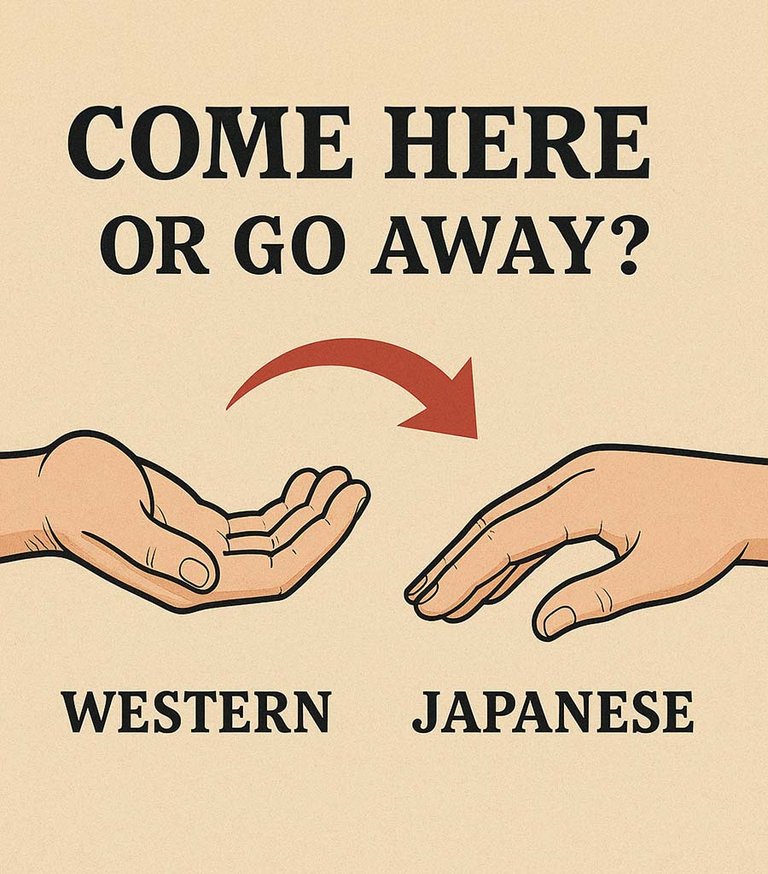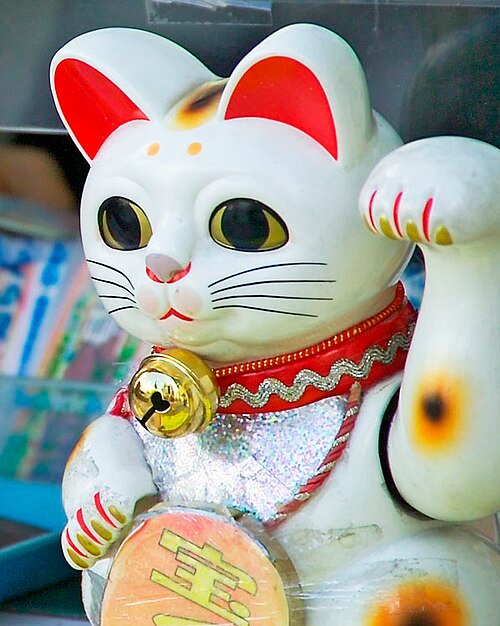Come Here or Go Away?

It’s the sort of thing that seems too small to matter — a quick flick of the wrist, an unconscious motion made dozens of times a day. But that’s the point. Because it is unconscious, because we do it without thinking, a tiny gesture like a beckon can be one of those tell-tale signs that you’re not from around here. And it can trip you up in ways you wouldn’t expect.
In the West[1], if you want to call someone over, you raise your hand, palm facing upward, and curl your fingers toward you. It’s casual. It’s clear. It says “Come here.”
But do that in Japan, and you might be seen as aggressive — or worse, offensive. That same gesture, when done with palm up and finger curling, is often how you’d call over a dog. Using it toward a person, especially someone older or in a position of authority, can come off as deeply disrespectful.
The Japanese equivalent is almost the exact opposite. To beckon someone over, you hold your hand out with your palm facing down, and then move your fingers toward you in a sort of downward scoop. It usually involves only the fingers — or at least less arm movement — compared to the Western palm-up version. It feels odd the first few times you try it. To Western eyes, it doesn’t look like “come here” at all; it looks like “go away.” And that’s exactly the problem. Japanese people using the native gesture abroad can confuse locals who think they’re being dismissed or shooed.
If you’ve ever seen a Maneki-neko figurine beckoning with a downward palm, you’ve seen this gesture in action. I’m told there are versions of the Maneki-neko that beckon with the palm up, but I’ve never seen any either in Japan or in the US.

via Wikiepdia
But I digress. So you see the problem here. Japanese using the downward version abroad risk being misunderstood, while Westerners in Japan using the upwards version risk coming off as aggressive. I think younger people in Japan are more aware of the Western version, so this isn’t something dire, but still — it is a misunderstanding better avoided.
When I first moved to Japan, I was told about this difference in passing, and I’m glad I was. It saved me from a few awkward situations. Even knowing about it, I still misunderstood the Japanese gesture sometimes, thinking they were shooing me away. We just have nothing like it in the West except “go away” so naturally that is what it looks like until you are used to seeing it.
It’s a small thing, but that’s exactly why it matters. Because if you want to understand another culture — not just visit it, but really understand it — you have to pay attention to the small things.

Do you have any experience with anything like this? Either this particular Japanese gesture or another case of confusing body language. Let me know in the comments.
❦
-
Well, much of the West but not all. Wikipedia tells me that Italians, Spaniards, and Greeks recognize the downward beckoning gesture just fine. ↩
These "small" details really show how important it is to be aware of cultural differences, especially when traveling or moving to a new environment.
It's crazy how different cultures can be like that.
yea.. small gesture.. but big difference. The 'come here' is the same in philippines as in japan.